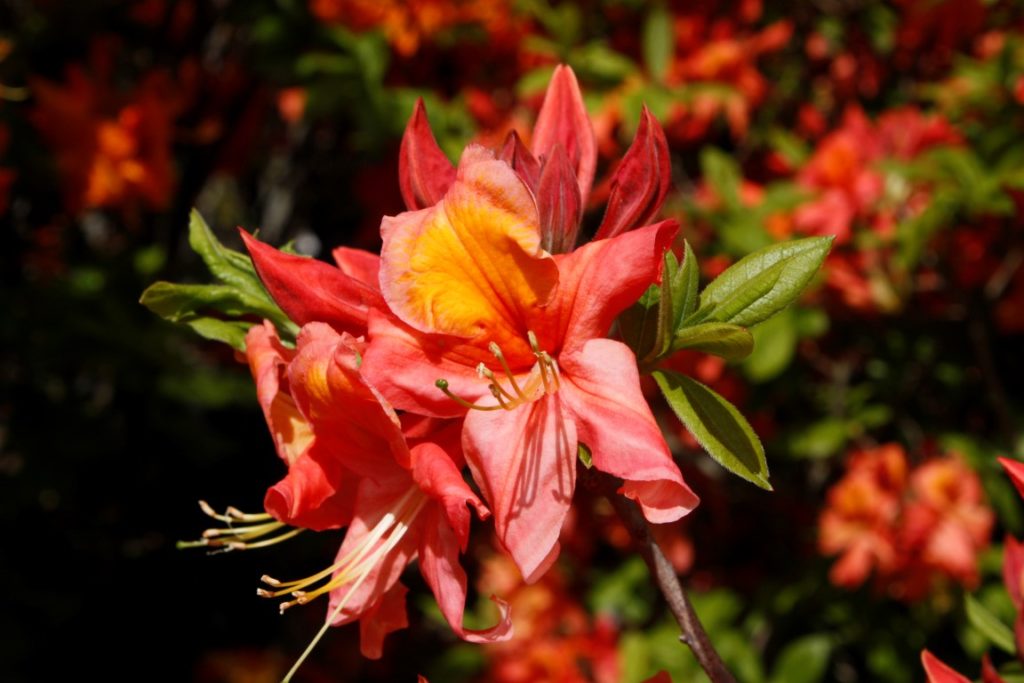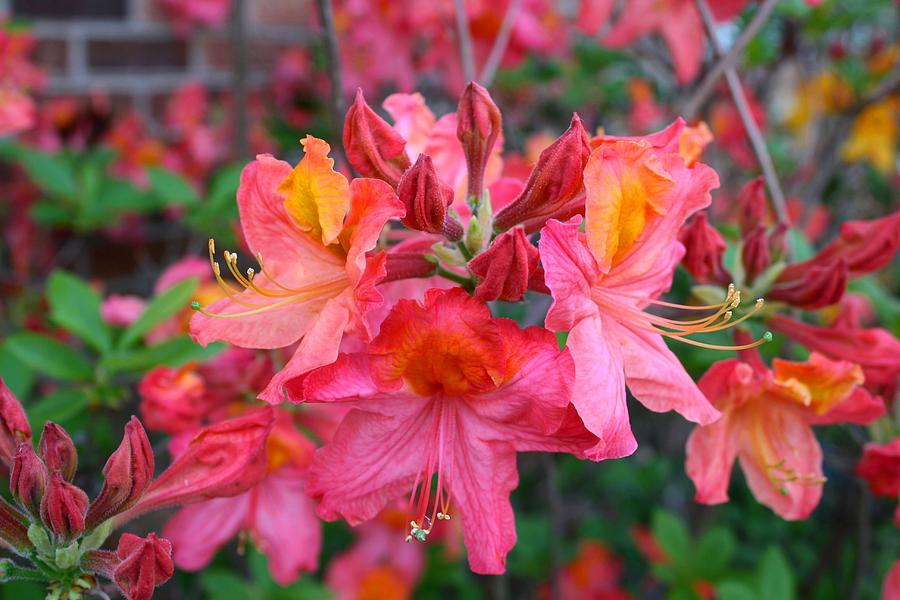Mt St Helens Azalea
If you are looking for a beautiful addition to your garden, then Mt St Helens Azalea is worth considering. With its striking red flowers, this deciduous azalea is sure to add a pop of color to your landscape. But, along with its beauty, Mt St Helens Azalea also offers many other benefits that make it a great choice for any gardener.
Pain Points of Mt St Helens Azalea
Do you struggle with finding the right plant that can thrive in acidic soil? Do you want to grow a beautiful plant that attracts pollinators but don’t know which one? These are two typical pain points faced by gardeners. Luckily, Mt St Helens Azalea is a perfect solution for both of these issues. This plant thrives in acid soil and its brightly colored flowers attract bees and hummingbirds to your garden.
What is Mt St Helens Azalea?
Mt St Helens Azalea is a deciduous azalea variety that produces stunning red flowers during the late spring season. This plant grows well in acidic soil, typically found in regions with high humidity. It is also known for attracting pollinators such as bees and birds, making it a great choice for those who want to create a garden that is both beautiful and beneficial for the ecosystem.
Summary of Main Points
In summary, Mt St Helens Azalea is a great choice for gardeners looking for a beautiful plant that offers multiple benefits. This deciduous azalea variety can thrive in acidic soil and attract pollinators to your garden. Its striking red flowers make it a showstopper in any landscape. But let's dive deeper and explore the unique features of Mt St Helens Azalea.
Mt St Helens Azalea: Attracting Pollinators to Your Garden
If you are an avid gardener, you know how important pollinators are for the health of your garden. Bees and hummingbirds play a crucial role in pollinating flowers and other plants, ensuring that they continue to produce fruits and seeds. Mt St Helens Azalea can help attract these pollinators to your garden with its brightly colored flowers that stick out from its green leaves. As a proud owner of Mt St Helens Azalea, I have witnessed bees and hummingbirds flocking to my garden to enjoy the plant's nectar. It was a beautiful sight to see them in action!
Mt St Helens Azalea: Ideal for Acid Soil
Acid soil is an area with a pH level lower than 6.5. Plants that thrive in acidic soil generally have shallow roots, which allow them to absorb nutrients and minerals quickly. Mt St Helens Azalea is one such plant that grows well in acidic soil. Its roots are shallow and can absorb nutrients efficiently, making it easy to maintain and feed. So if you have acid soil in your garden, Mt St Helens Azalea can be a perfect addition to your landscape.
Attracting Birds with Mt St Helens Azalea
Birds can be a joy to have in any garden. They are natural pollinators, and their chirping and singing can add to the peaceful ambiance of your garden. If you want to attract more birds to your garden, planting Mt St Helens Azalea can help. The bright red flowers of this plant produce nectar, which can attract a wide range of bird species, specifically hummingbirds, orioles, and finches. Seeing these beautiful birds interact with the plant was a truly mesmerizing experience for me.
The Many Varieties of Mt St Helens Azalea
Mt St Helens Azalea is a versatile plant that comes in many varieties. There are evergreen varieties that keep their leaves year-round, deciduous varieties that lose their leaves every fall, and dwarf varieties that are perfect for planting in containers or small gardens. Regardless of the variety you choose, Mt St Helens Azalea is sure to add a burst of color and beauty to your garden.
Question and Answer: All You Need to Know About Mt St Helens Azalea
What is the best time to plant Mt St Helens Azalea?
The best time to plant Mt St Helens Azalea is in the fall season. The plant will have enough time to establish its roots before the cold winter season starts. It will also bloom better the following spring due to its well-established root system.
What type of soil is suitable for Mt St Helens Azalea?
Mt St Helens Azalea prefers soil with a pH level of 5.0 to 6.0. The soil should also be well-draining and rich in organic matter. A blend of peat moss and well-draining garden soil is perfect for this plant.
Does Mt St Helens Azalea need full sunlight or shade?
Mt St Helens Azalea thrives in partial shade to full shade conditions. Too much exposure to the sun can harm the plant's foliage and blooms.
Can Mt St Helens Azalea grow indoors?
Mt St Helens Azalea is an outdoor plant and prefers to grow in the ground. However, you can grow it in a container as long as it has enough soil space and is placed outdoors in a shady area.
Conclusion of Mt St Helens Azalea
In conclusion, Mt St Helens Azalea is a versatile and beautiful plant that offers several benefits to gardeners. Its red flowers attract pollinators, making it an excellent option for those who want to create an ecosystem-friendly garden. The plant can also thrive in acidic soil, making it easy to maintain and feed. Its several varieties make it possible to plant it in any garden, regardless of the size. So why not add Mt St Helens Azalea to your garden and enjoy its beauty every spring?
Gallery
PlantFiles Pictures: Rhododendron, Azalea 'Mount St. Helens
Photo Credit by: bing.com / helens azalea st rhododendron mount uw arboretum sparse bloom coral madison 5a zone early flowers june beautiful red but rebecca101
Azalea Mollis Mt St Helens – Kilmarnock Nurseries

Photo Credit by: bing.com / helens azalea mollis
Mt St Helens Azalea Photograph By Kathryn Meyer

Photo Credit by: bing.com / azalea helens mt st meyer kathryn photograph 12th uploaded june which
Mt. St. Helens Exbury Azalea 3 GAL – Bremerton City Nursery

Photo Credit by: bing.com / helens exbury gal azalea mt st azaleas shop
Azalea, Deciduous ‘Mt. Saint Helen’s’ – Wilson's Garden Center

Photo Credit by: bing.com / mt azalea saint helens helen st deciduous rhododendron exbury